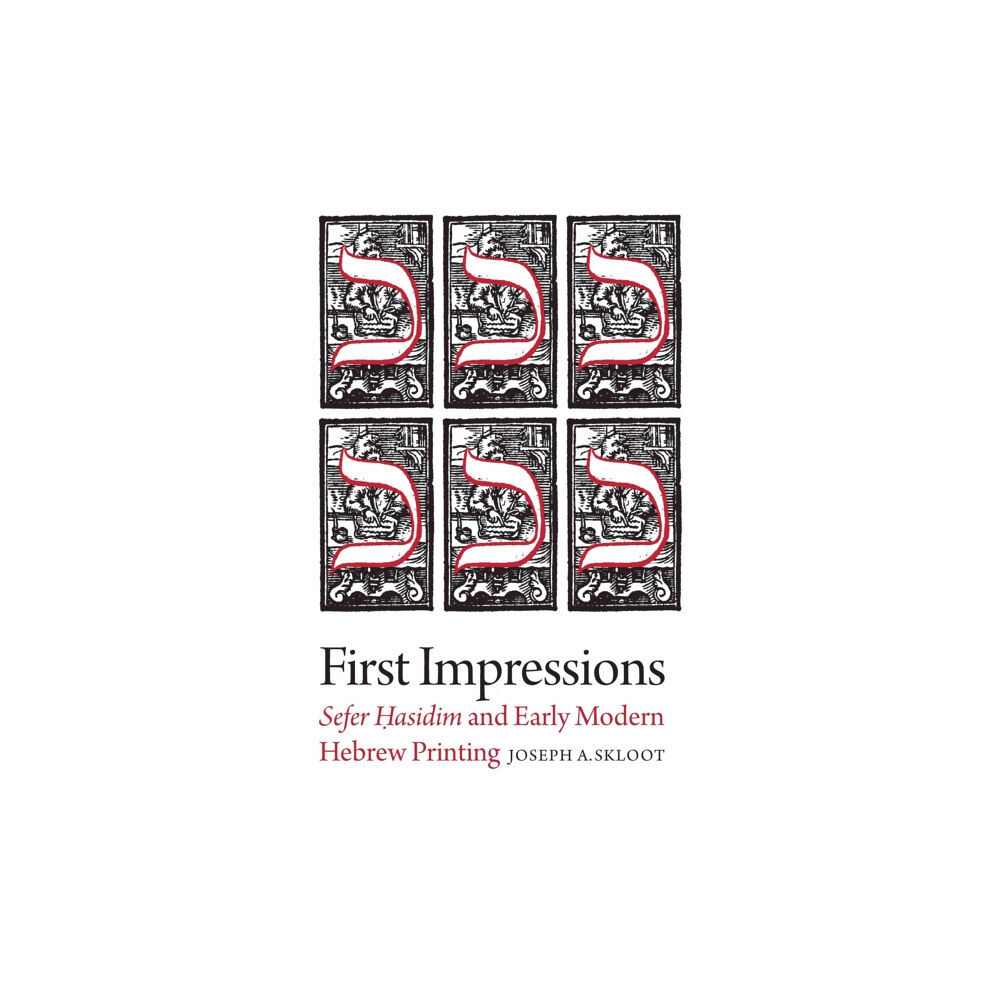- Hem
- Böcker
- Kurslitteratur
- Litteraturvetenskap & Språklära
- First Impressions – Sefer Hasidim and Early Modern Hebrew Printing (häftad, eng)

First Impressions – Sefer Hasidim and Early Modern Hebrew Printing (häftad, eng)
Uncovers the history of creative adaptation and transformation through a close analysis of the creation of the Sefer Hasidim book. In 1...
515 kr
549 kr
Bara 2 kvar
Skickas inom 4 - 5 vardagar
- Fri frakt
Fri frakt över 399:-
Snabb leverans
Alltid låga priser
Produktbeskrivning
Uncovers the history of creative adaptation and transformation through a close analysis of the creation of the Sefer Hasidim book. In 1538, a partnership of Jewish silk makers in the city of Bologna published a book entitled Sefer Hasidim, a compendium of rituals, stories, and religious instruction that primarily originated in medieval Franco-Germany.
How these men, of Italian and Spanish descent, came to produce a book that would come to shape Ashkenazic culture, and Jewish culture more broadly, over the next four centuries is the basis of this kaleidoscopic study of the history of Hebrew printing in the sixteenth century.
During these early years of printing, the classic works of ancient and medieval Hebrew and Jewish literature became widely available to Jewish (and non-Jewish) readers for the first time. Printing, though, was not merely the duplication and distribution of pre-existing manuscripts, it was the creative adaptation and transformation of those manuscripts by printers.
Ranging from Catholic Bologna to Protestant Basel to the Jewish heartland of the Polish-Lithuanian Commonwealth, Joseph A. Skloot uncovers the history of that creativity by examining the first two print editions of Sefer Hasidim. Along the way, he demonstrates how volumes that were long thought to be eternal and unchanging were in fact artifacts of historical agency and contingency, created by and for human beings
How these men, of Italian and Spanish descent, came to produce a book that would come to shape Ashkenazic culture, and Jewish culture more broadly, over the next four centuries is the basis of this kaleidoscopic study of the history of Hebrew printing in the sixteenth century.
During these early years of printing, the classic works of ancient and medieval Hebrew and Jewish literature became widely available to Jewish (and non-Jewish) readers for the first time. Printing, though, was not merely the duplication and distribution of pre-existing manuscripts, it was the creative adaptation and transformation of those manuscripts by printers.
Ranging from Catholic Bologna to Protestant Basel to the Jewish heartland of the Polish-Lithuanian Commonwealth, Joseph A. Skloot uncovers the history of that creativity by examining the first two print editions of Sefer Hasidim. Along the way, he demonstrates how volumes that were long thought to be eternal and unchanging were in fact artifacts of historical agency and contingency, created by and for human beings
| Format | Häftad |
| Omfång | 268 sidor |
| Språk | Engelska |
| Förlag | Brandeis University Press |
| Utgivningsdatum | 2023-04-26 |
| ISBN | 9781684581498 |
Specifikation
Böcker
- Format Häftad
- Antal sidor 268
- Språk Engelska
- Utgivningsdatum 2023-04-26
- ISBN 9781684581498
- Förlag Brandeis University Press
Leverans
Vi erbjuder flera smidiga leveransalternativ beroende på ditt postnummer, såsom Budbee Box, Early Bird, Instabox och DB Schenker. Vid köp över 399 kr är leveransen kostnadsfri, annars tillkommer en fraktavgift från 39 kr. Välj det alternativ som passar dig bäst för en bekväm leverans.
Betalning
Du kan betala tryggt och enkelt via Avarda med flera alternativ: Swish för snabb betalning, kortbetalning med VISA eller MasterCard, faktura med 30 dagars betalningstid, eller konto för flexibel delbetalning.
Specifikation
Böcker
- Format Häftad
- Antal sidor 268
- Språk Engelska
- Utgivningsdatum 2023-04-26
- ISBN 9781684581498
- Förlag Brandeis University Press
